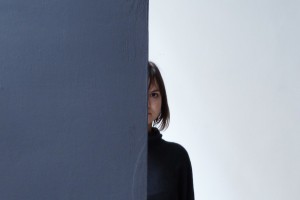Vlad Țenu, the renowned Romanian architect, discusses the latest exhibition of design and architecture he curated in Shanghai.
Could you please introduce briefly the concept and aims of your project.
In line with the current exponentially increasing digital layers of our lives, the concept of the exhibition focuses on the implications of these layers and of information in the way we design. The idea has emerged naturally from distilling the exceptional qualities of this series of cutting-edge works to their essence: it is a showcase of process-based designs, installations and architectural experiments conceived through various systematic creative mechanisms, iterative geometric transformations or algorithmic techniques and materialised through complex fabrication technologies.
It is an exhibition reflecting on the evolving nature of the contemporary design methodologies and their various conceptual and material connotations. The inherent multidisciplinary character of these increasingly complex techniques is often placing morphogenesis at the core of a visionary approach to architecture and design. Self-organisation, cellular growth or fluid dynamics are only a few of the obvious correlations with nature, their digital manifestations transcending the conceptual and being expressed through craft and ingenuity in the making. From the analogue to the digital, from the rational to the poetic, from the numeric to the musical, the diversity of approaches illustrates the endless palette of their applications in architecture, design, fashion and art.
There is an important educational dimension to this project – talks, student workshops. Could you explain its relevance?
The educational aspect of the event comes from the aim of demystifying such innovative design techniques and revealing the thought processes and rigorous rule-based systems behind most of the works. It is about revealing the possibilities of an informed architecture emerged from a creative flow that involves real parameters, constraints or constantly evolving sets of information. With roots in the process art or music from the ‘70s, in contemporary design this approach does not generate an object, but a family of works, all distinctively represented by a common concept embedded in the process.
The images of the exhibition show works developing both the digital and the organic aspects of design and architecture. Are these the relevant trends today? How are they changing our environment, interactions and behaviours?
One of the key elements of this exhibition is the actual connection between digital and organic or, in fact, their equivalence often illustrated through the means of computation. It is about algorithms that allow for an organic development of a design or vice-versa: computer algorithms that are inspired by natural phenomena. They are elements that transcend the status of a trend, becoming a change in the way we perceive design, in line with the latest advances in digital fabrication and wider accessibility of techniques such as 3d printing. It is the need of managing unprecedented levels of information which triggers the imminent presence of computation in a lot of aspects of our lives. This suggest the potential for active participation of not only the designers but of the public as well as users in the design process, from an object design scale to an architectural or even urban scale.
What is the purpose of implementing this project in Shanghai? Will there be subsequent projects in Europe or the US? How do you see its development?
PROCESS is an exhibition organised by EUSight, and it is the first one of a series of promotional events in China announcing a new collaborative platform that brings together a range of European architects and designers pushing the boundaries of their fields. It is an initiative meant to create opportunities and facilitate the implementation of various cutting-edge designs and research projects within the current prosperous Chinese market.
How is the Romanian design and architecture scene situated in relation to the trends you are highlighting in this project? Do you see such a project taking place in Romania as well?
There are many examples of exceptional projects and talented individuals that shape the contemporary avant-garde in Romanian design and architecture, which is very interesting in the context of several recently accredited inventions or technical innovation academic awards as well. I would love to see collaborative initiatives in this context, as from my point of view, multidisciplinary is key to the development of novel ideas and concepts and, with support from relevant institutions or clients, very exciting projects are bound to emerge.
PROCESS. An Exhibition of Visionary Architecture and Generative Design
Soho FuXing Plaza, Shanghai, 1 -16 November 2014
Presented by EUSight
Curator: Vlad Tenu
Curatorial Assistant: Simona Nastac
POSTED BY
Cristina Bogdan
Founder and editor-in-chief, between 2014-19, of the online edition of Revista ARTA. Co-founder of East Art Mags, a network of contemporary art magazines from eastern and Central Europe. Runs ODD, a s...
www.evenweb.org


























Comments are closed here.